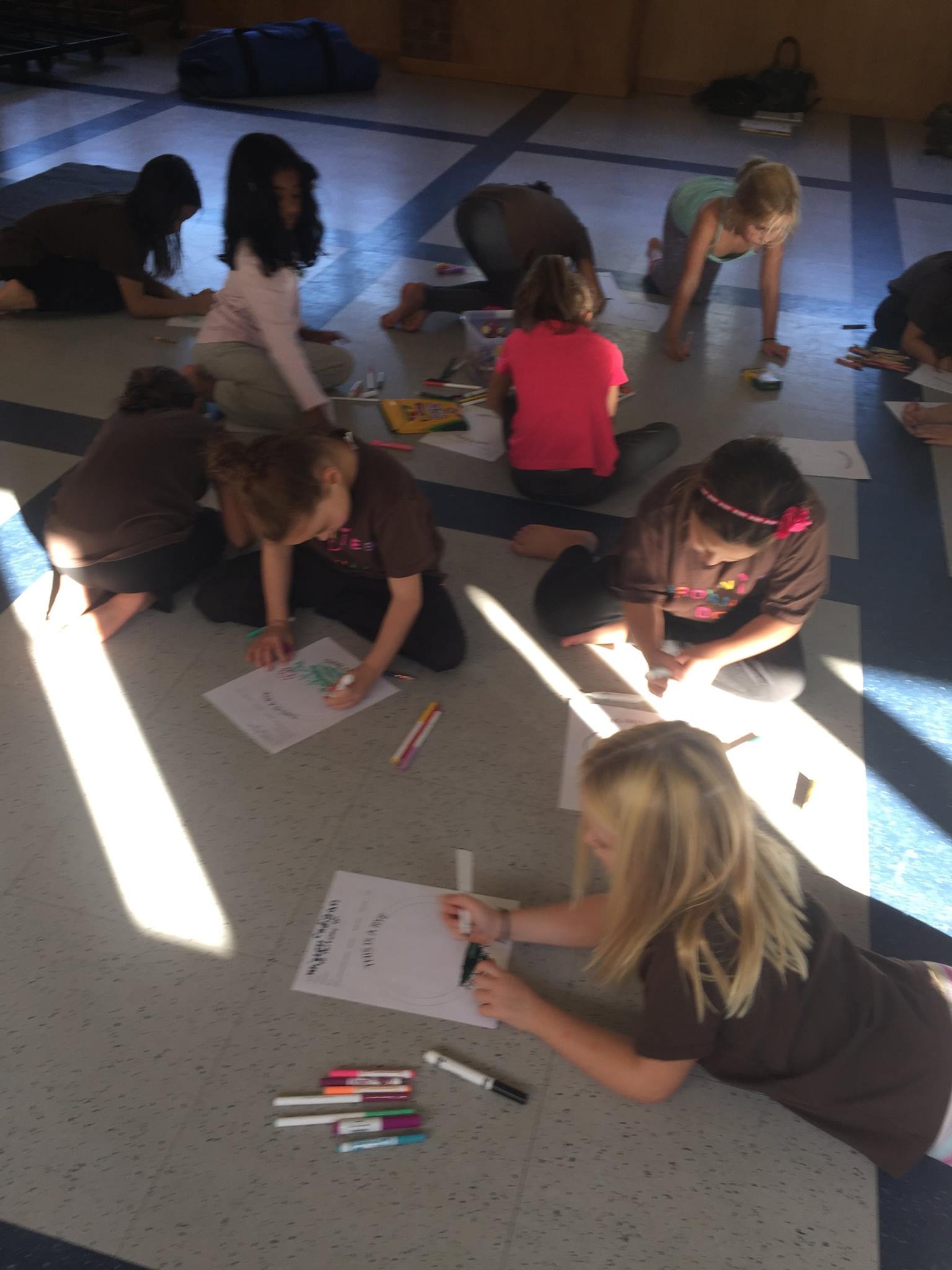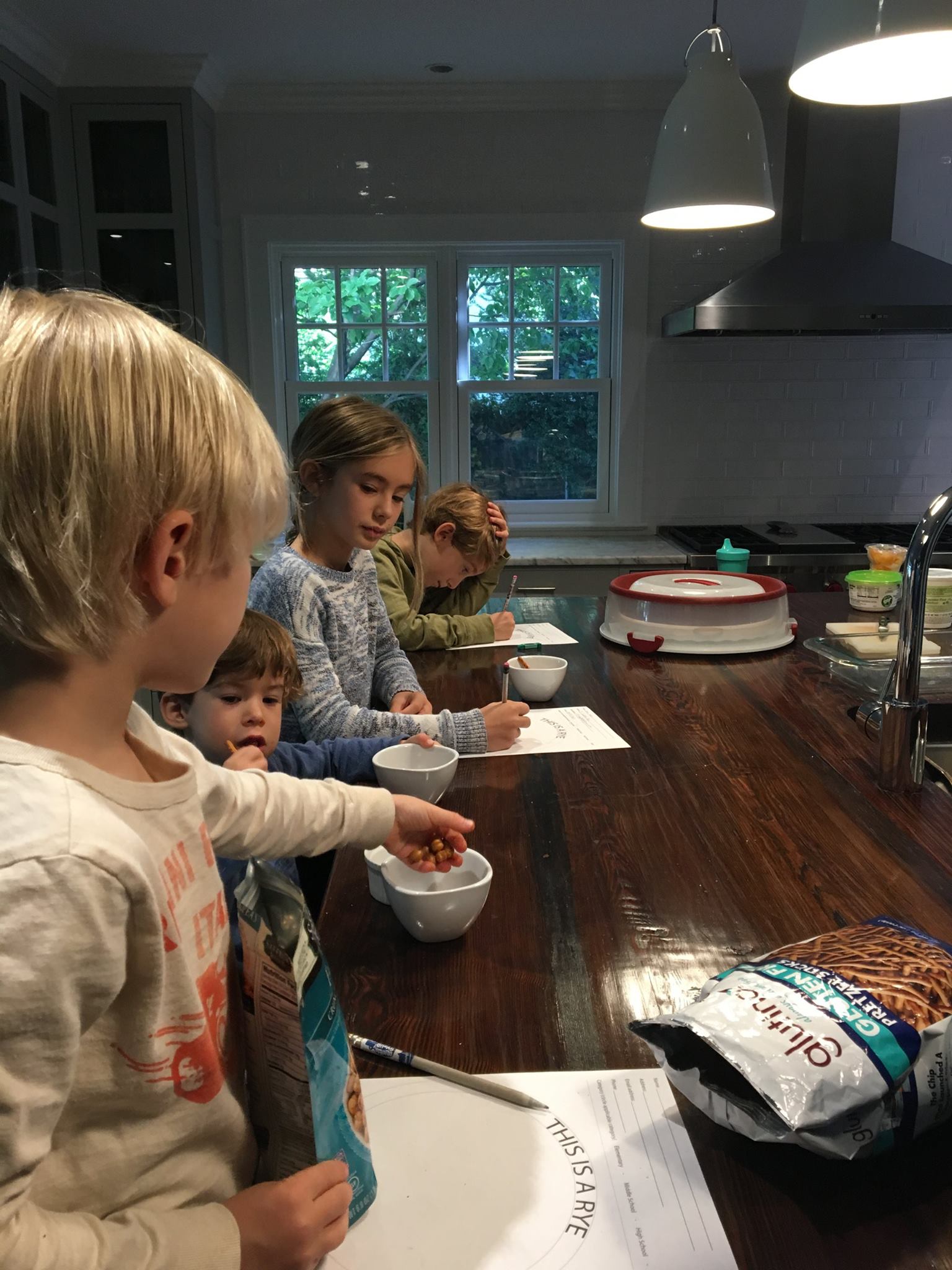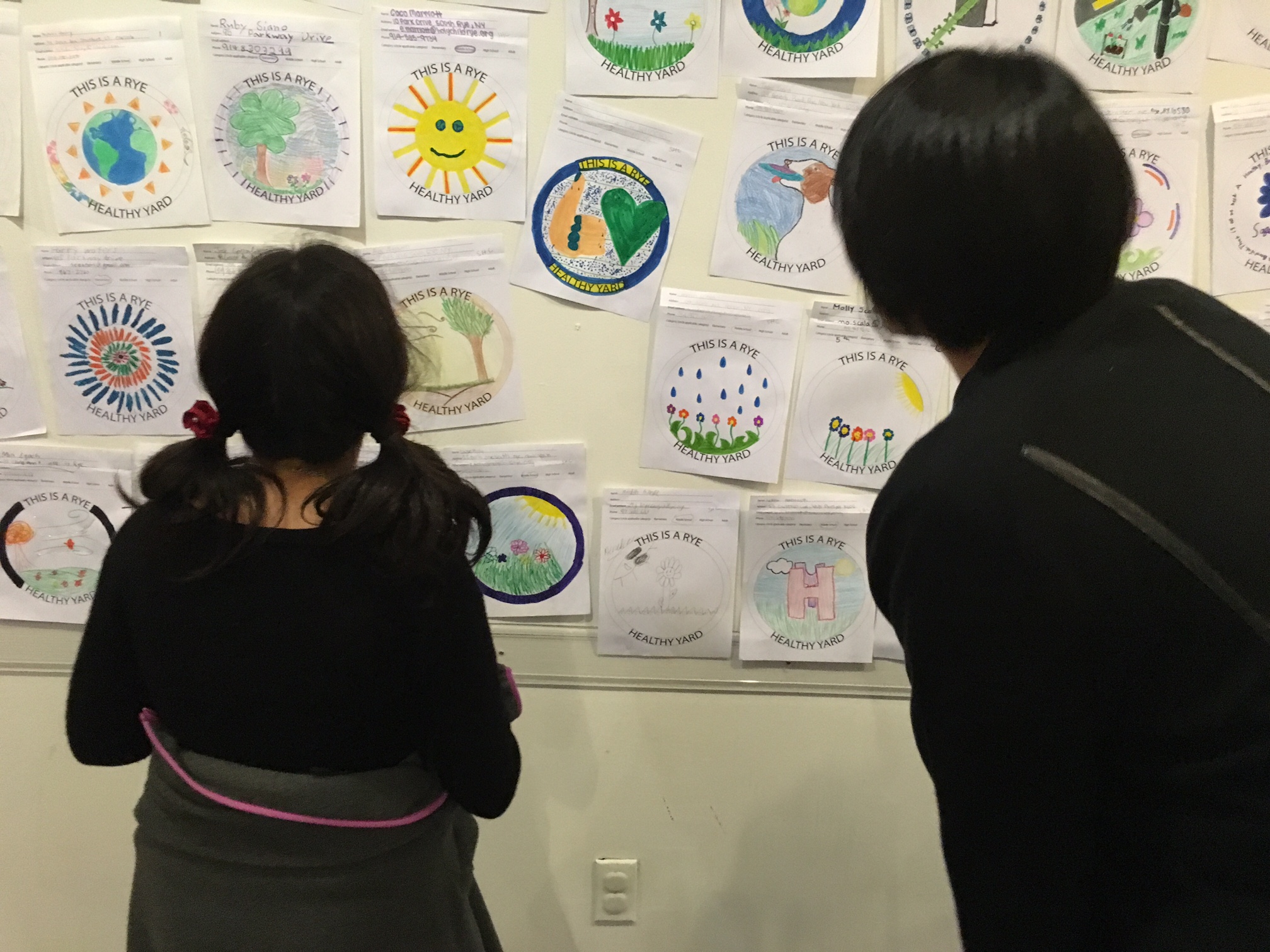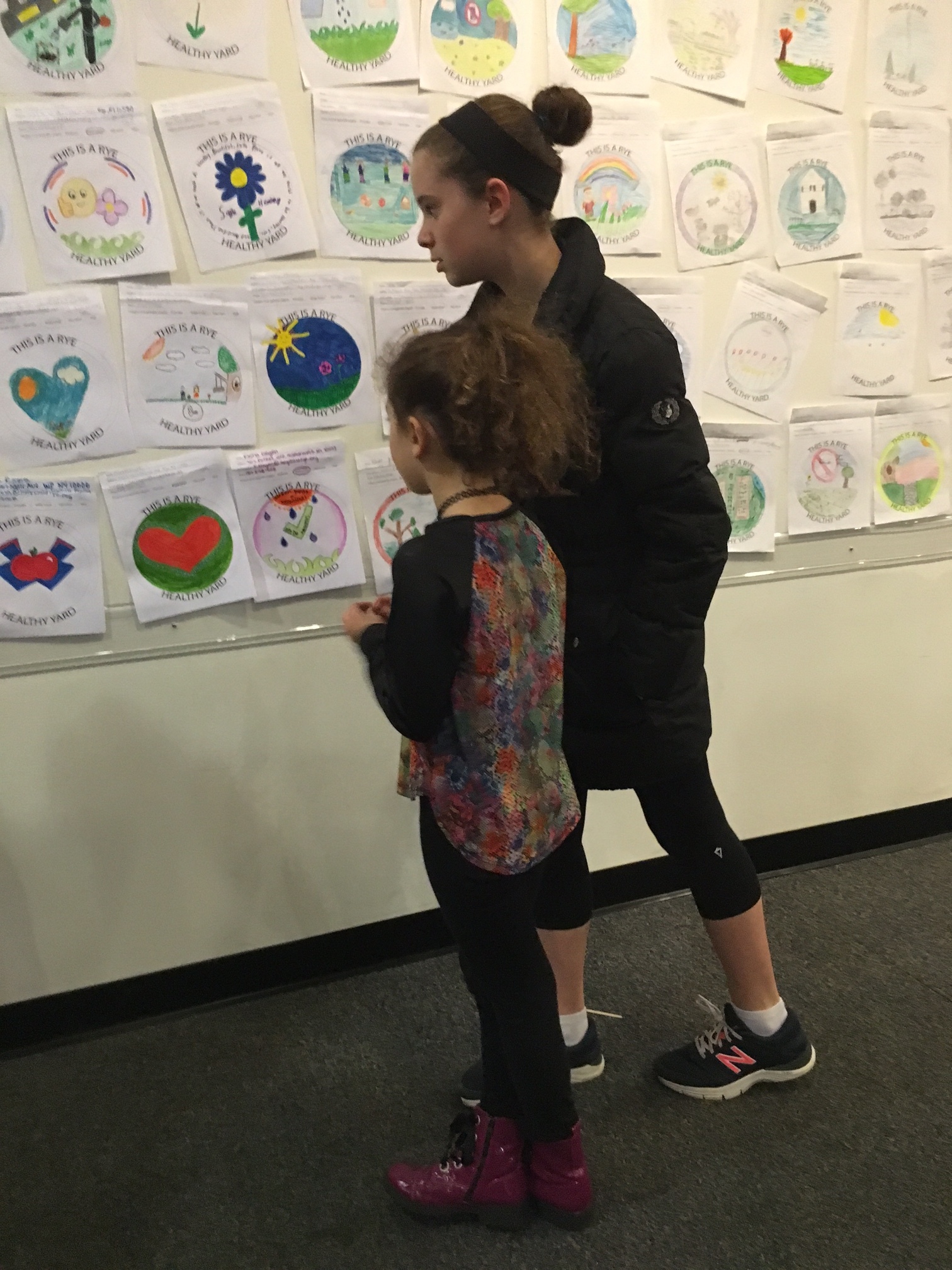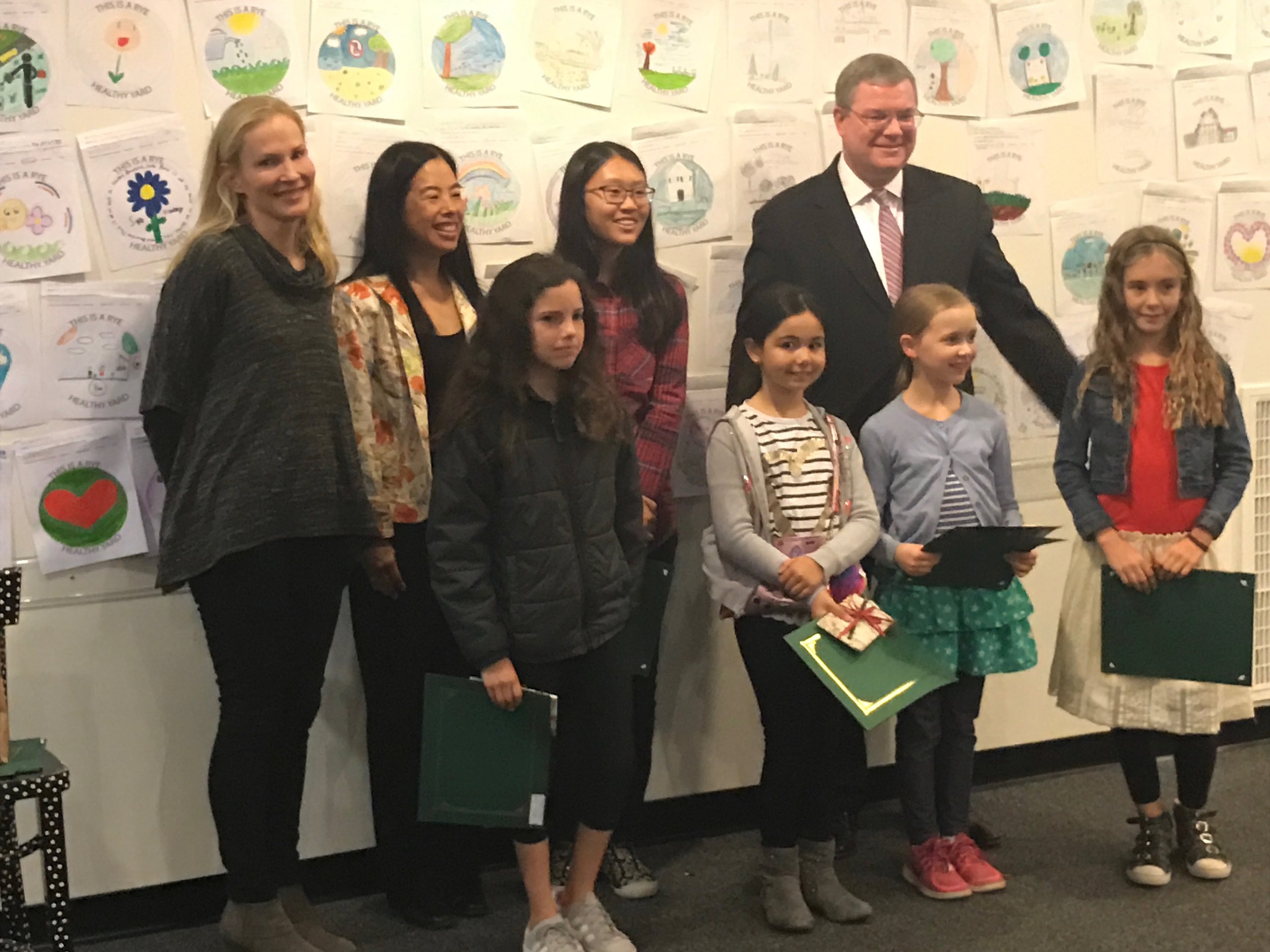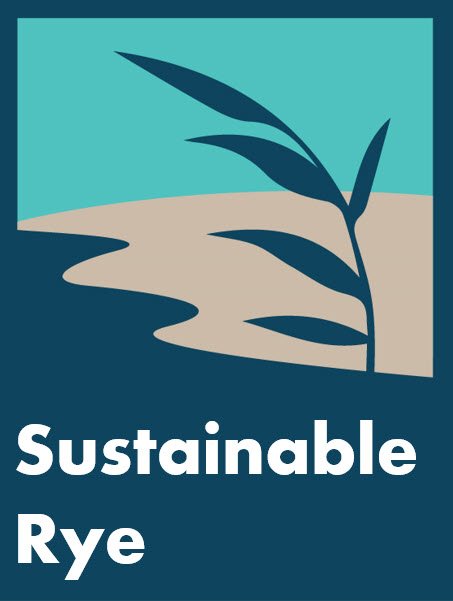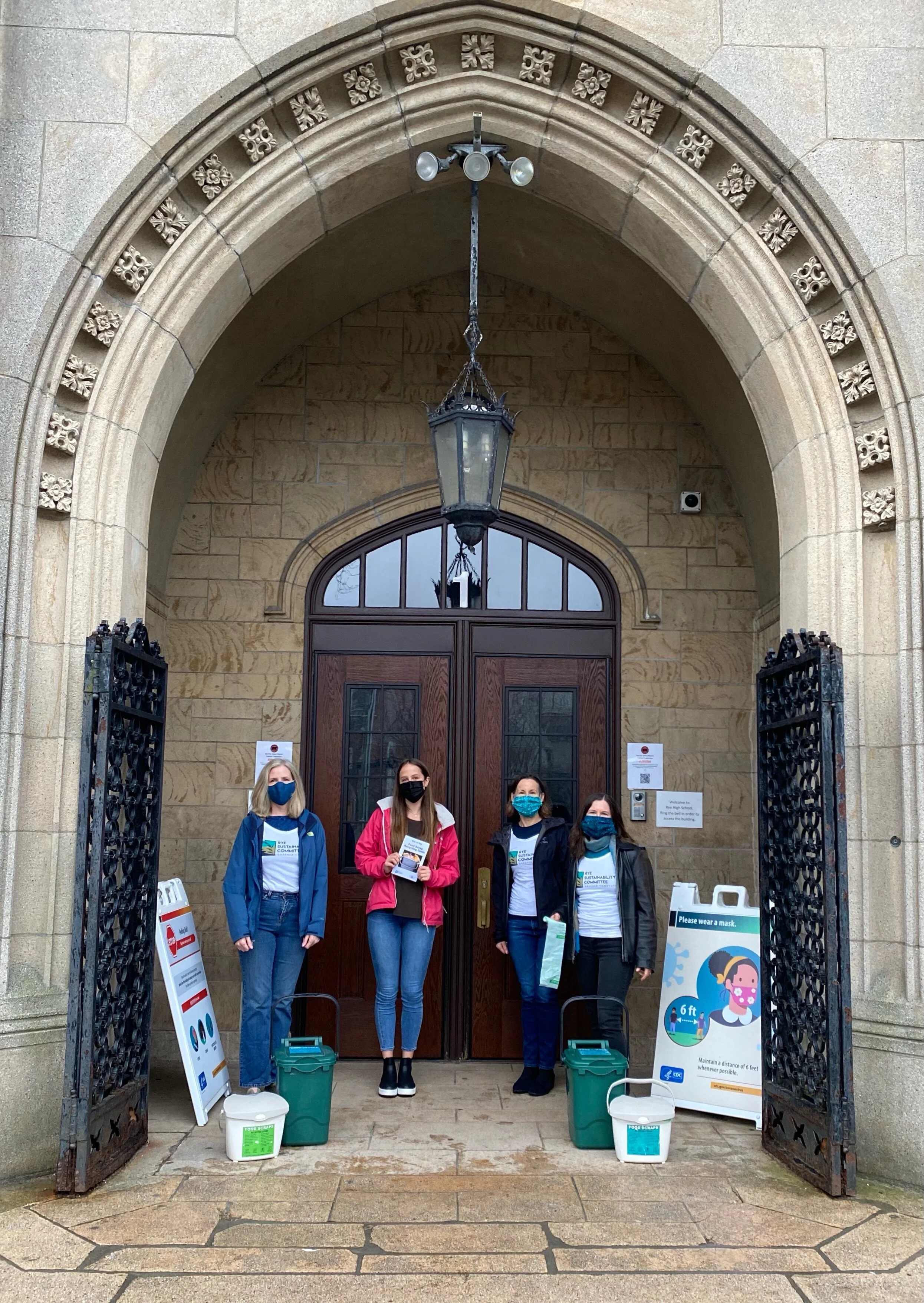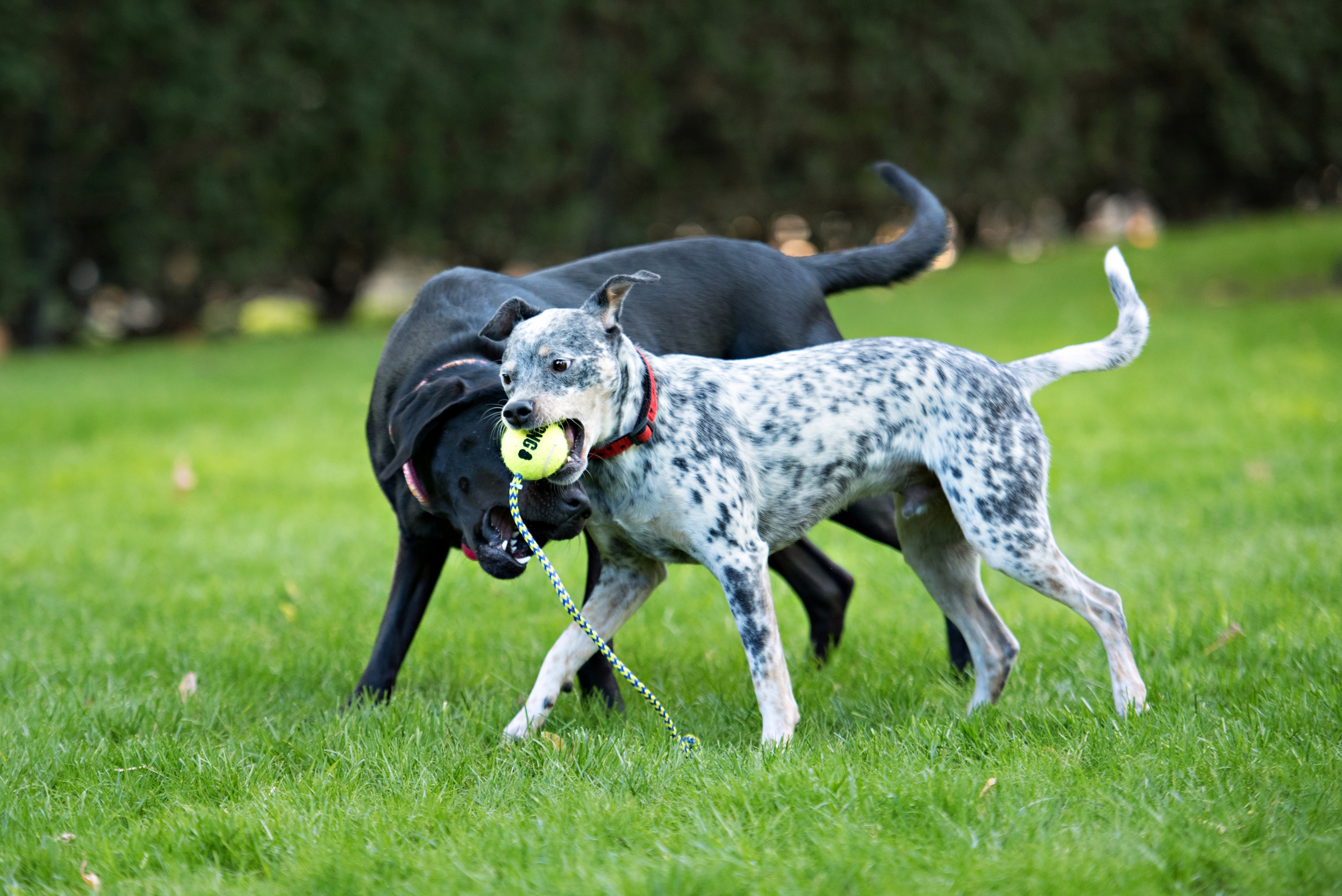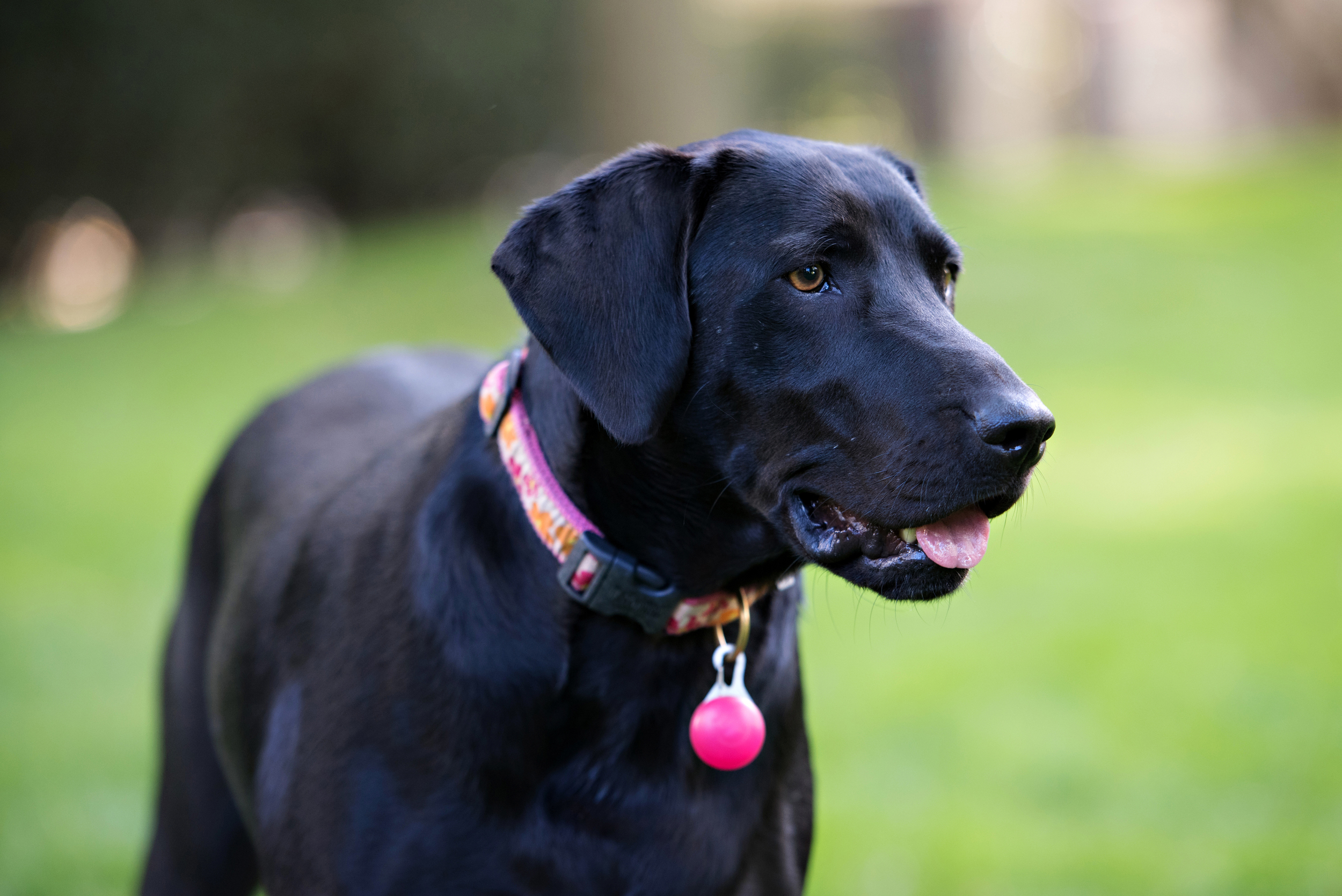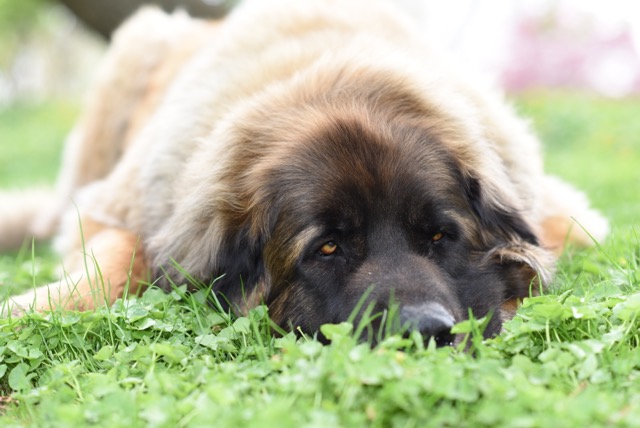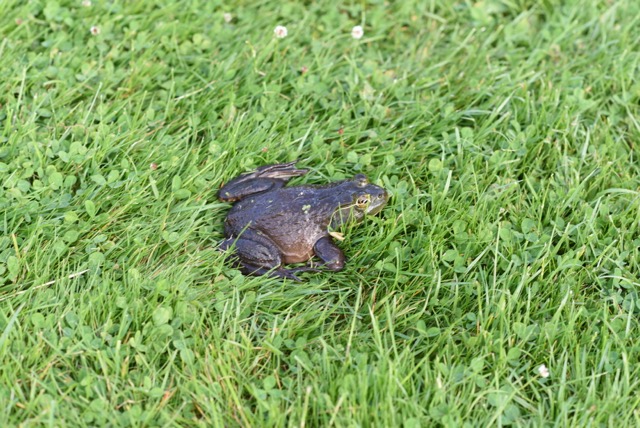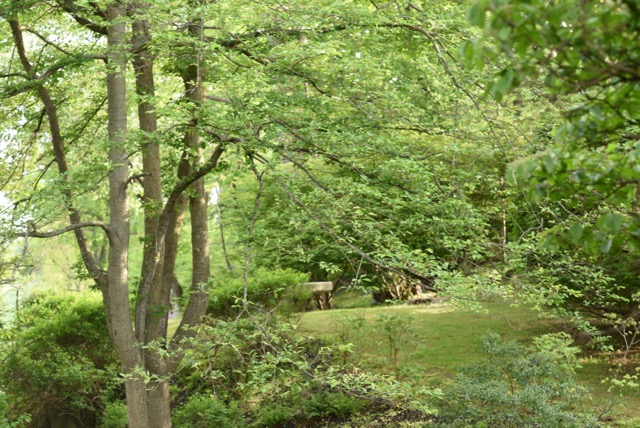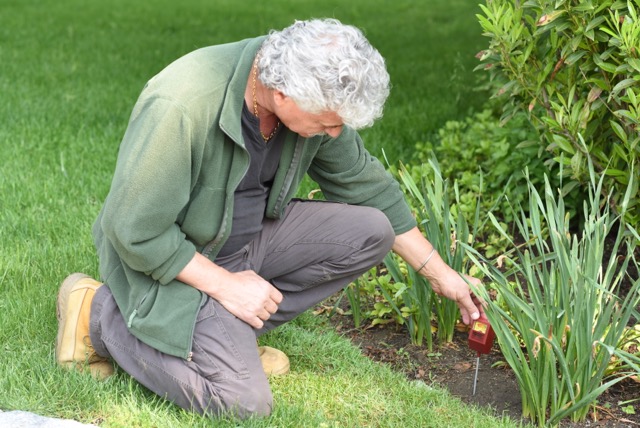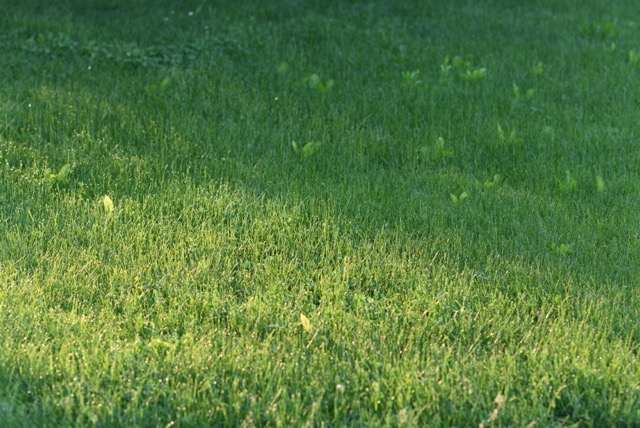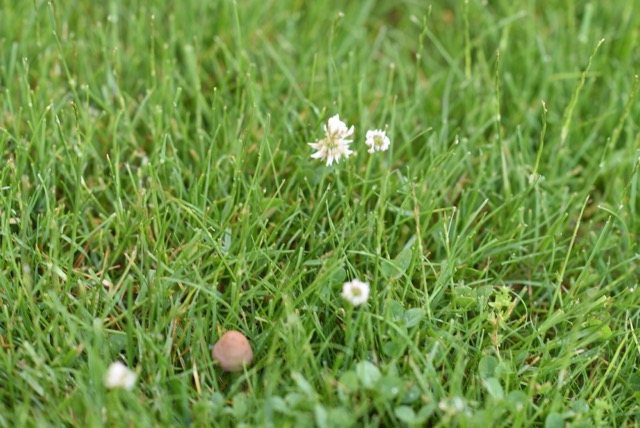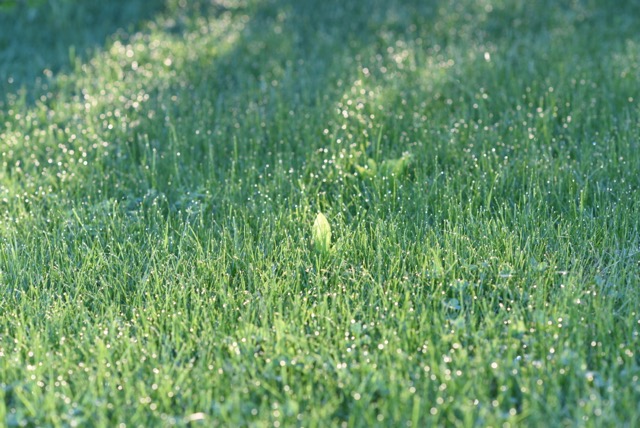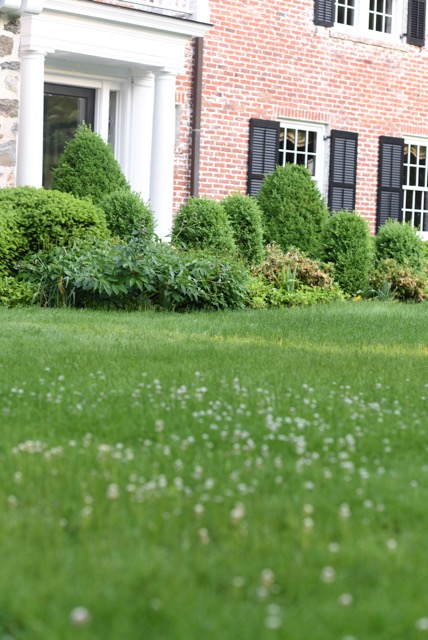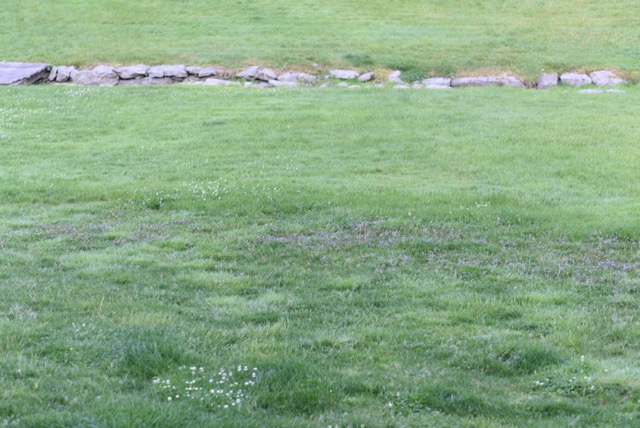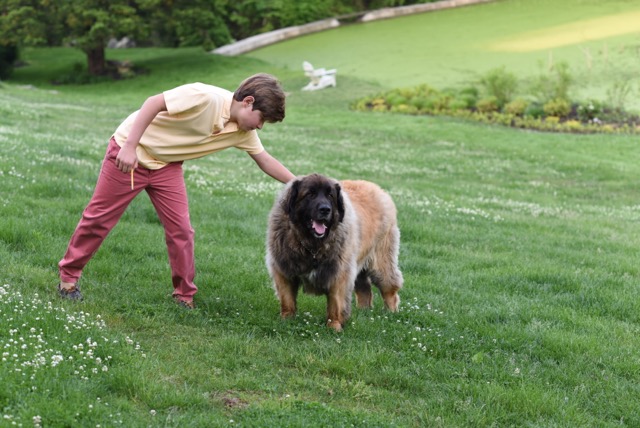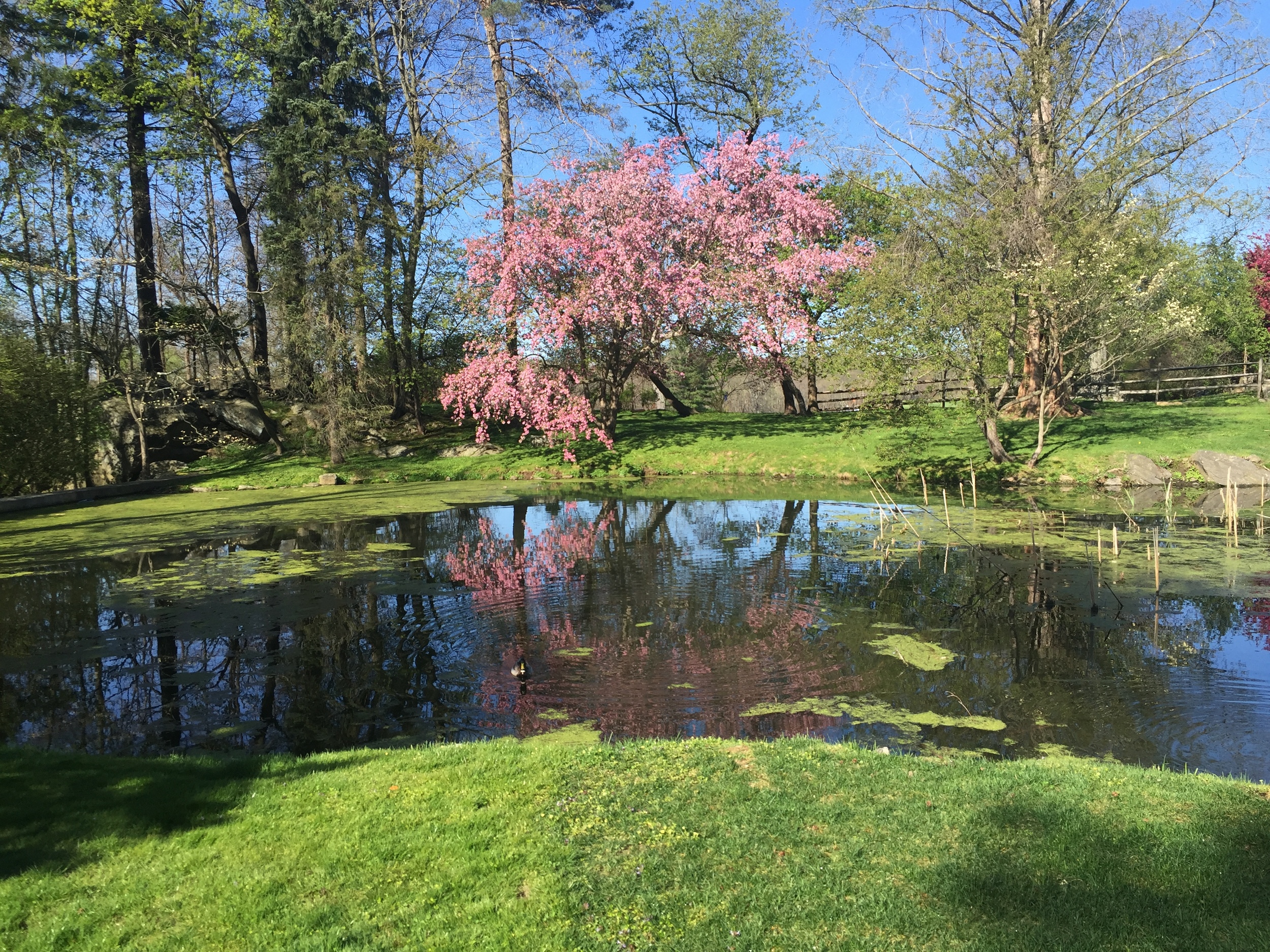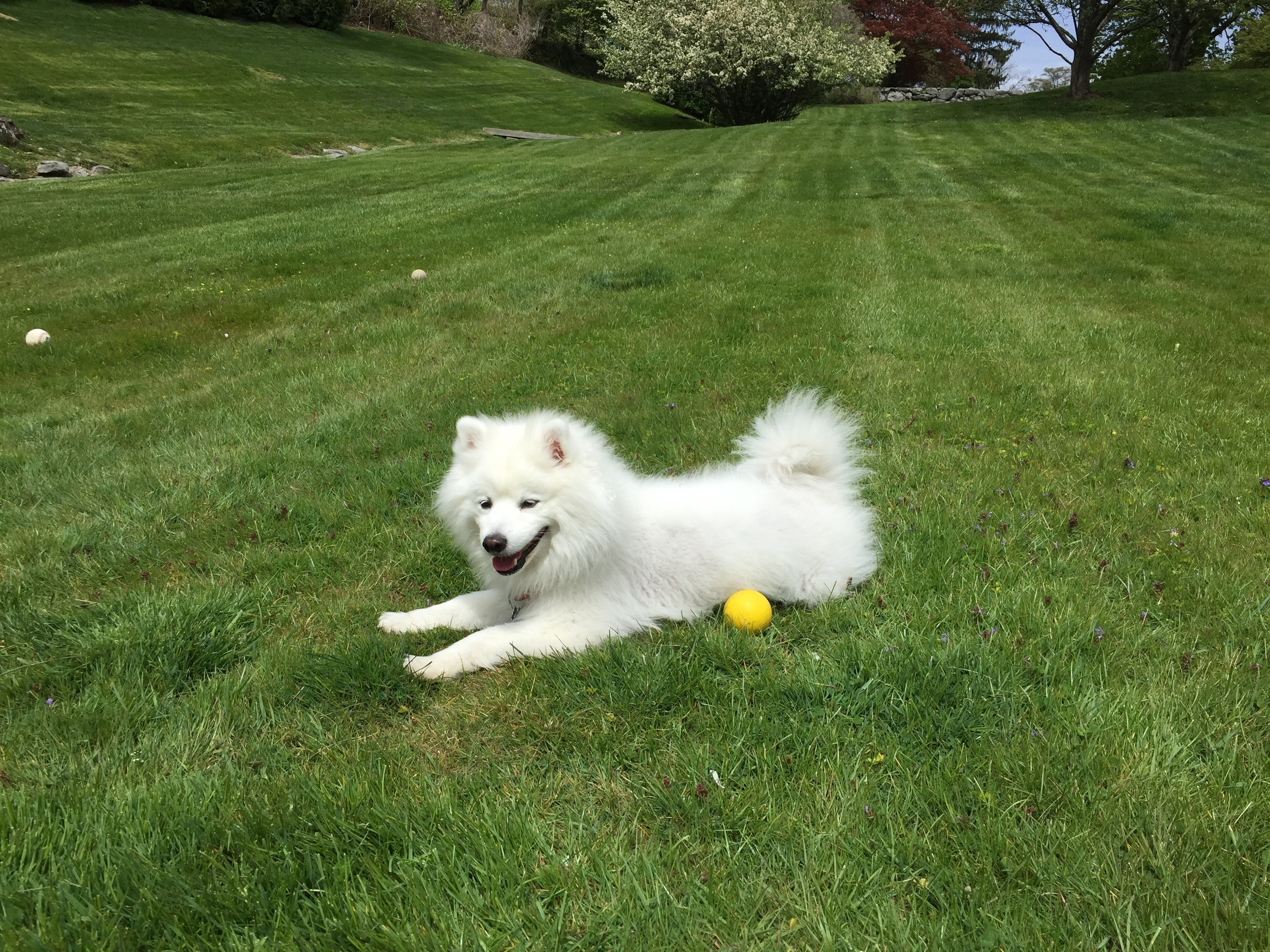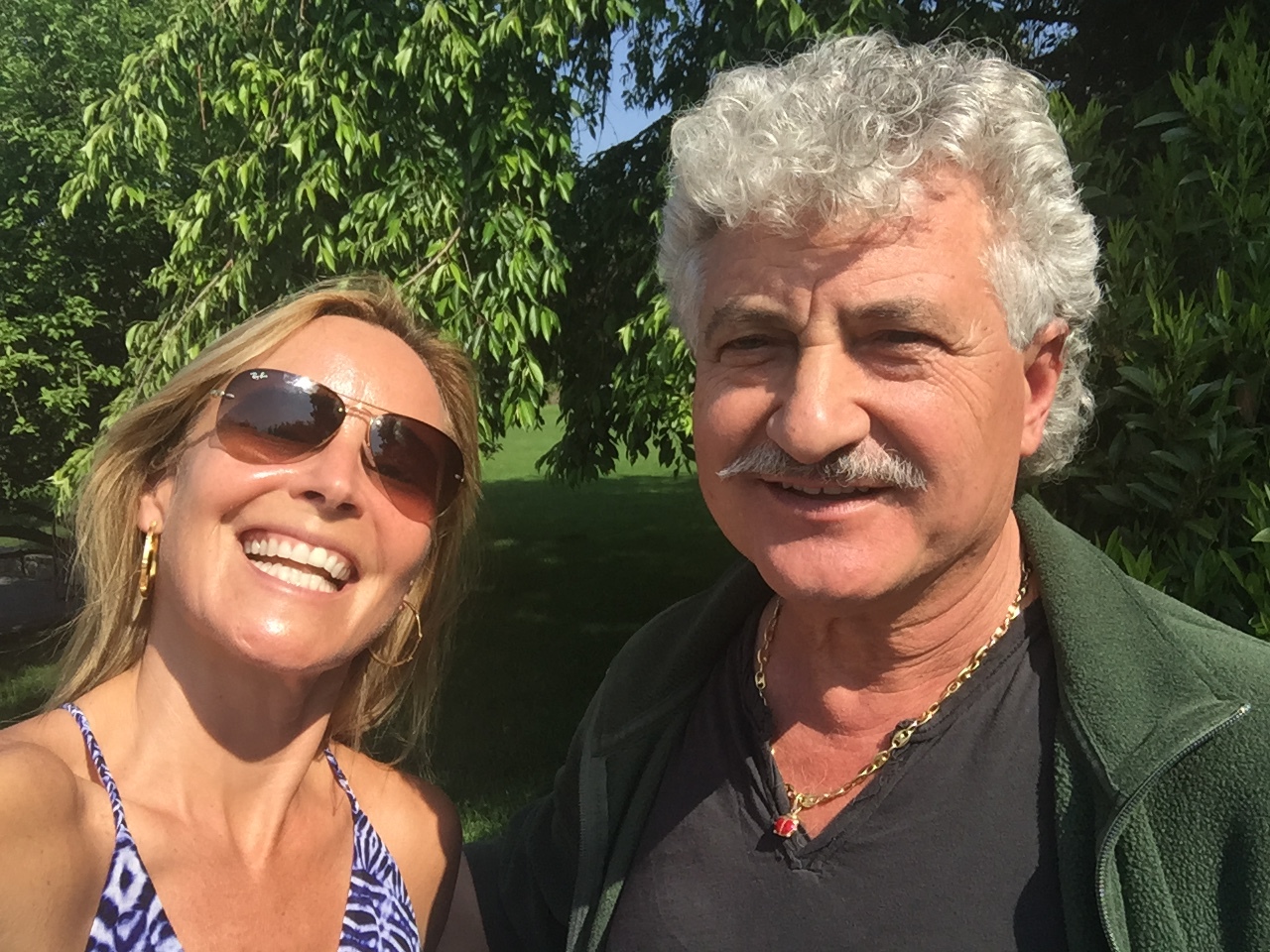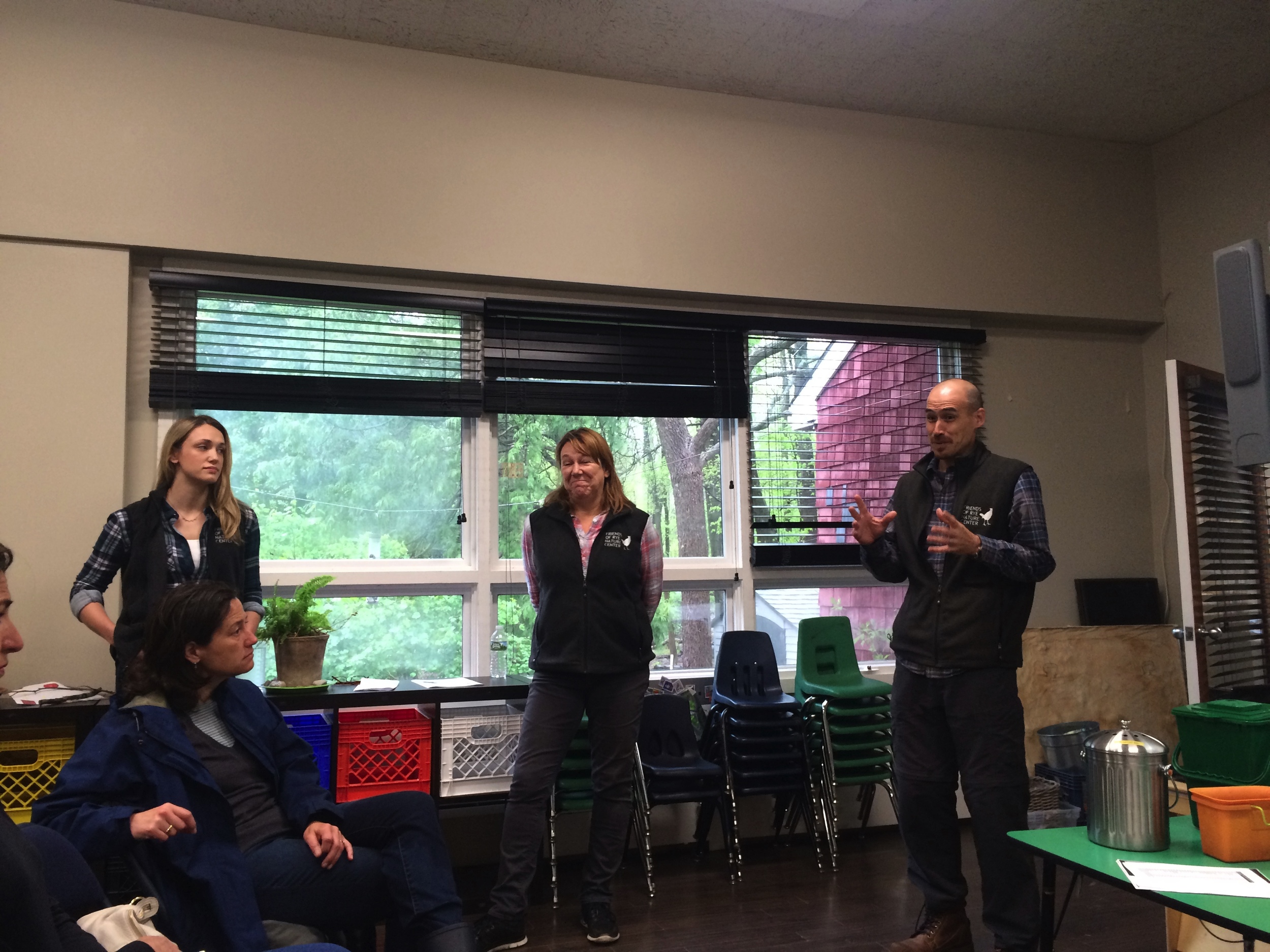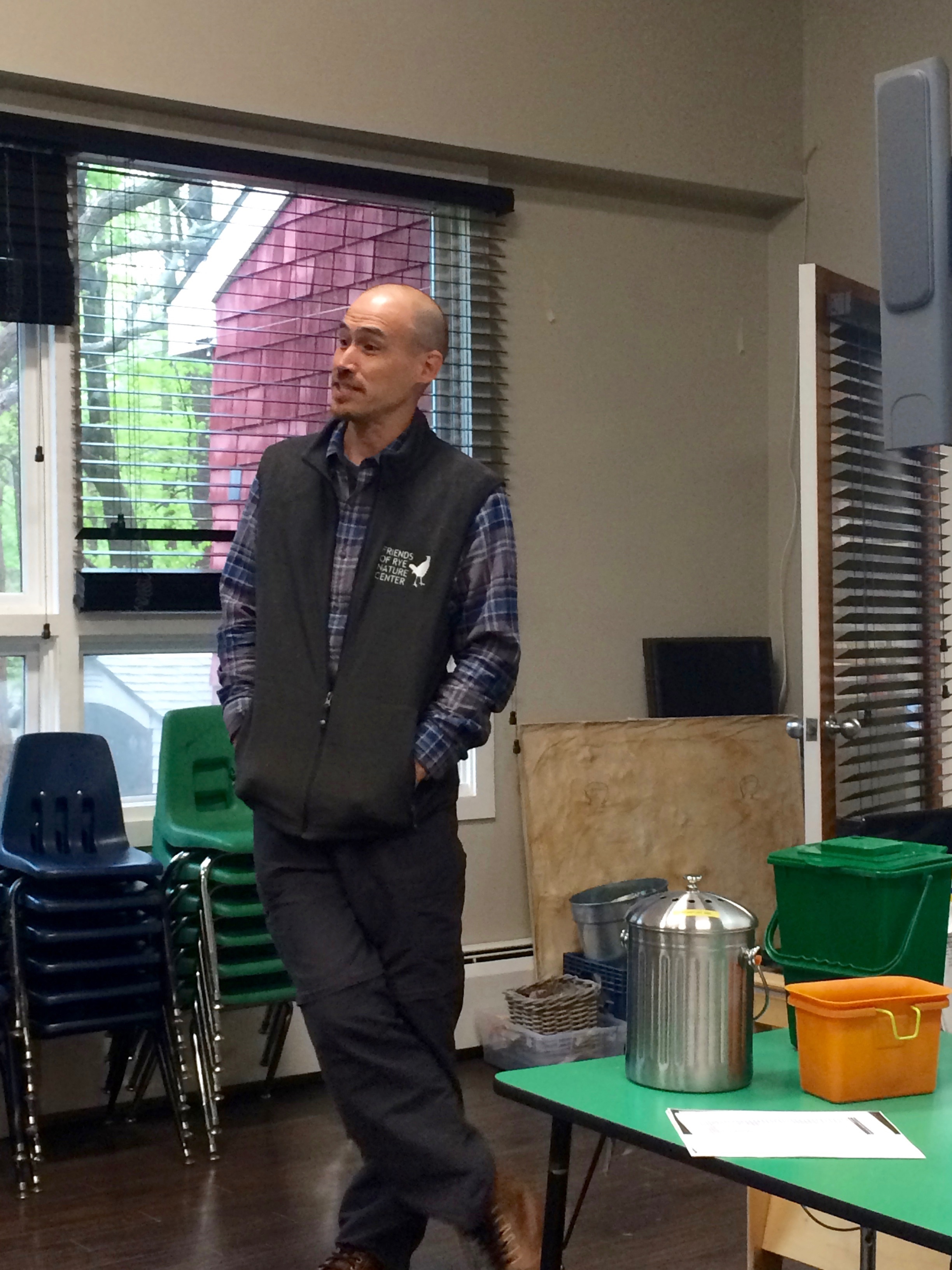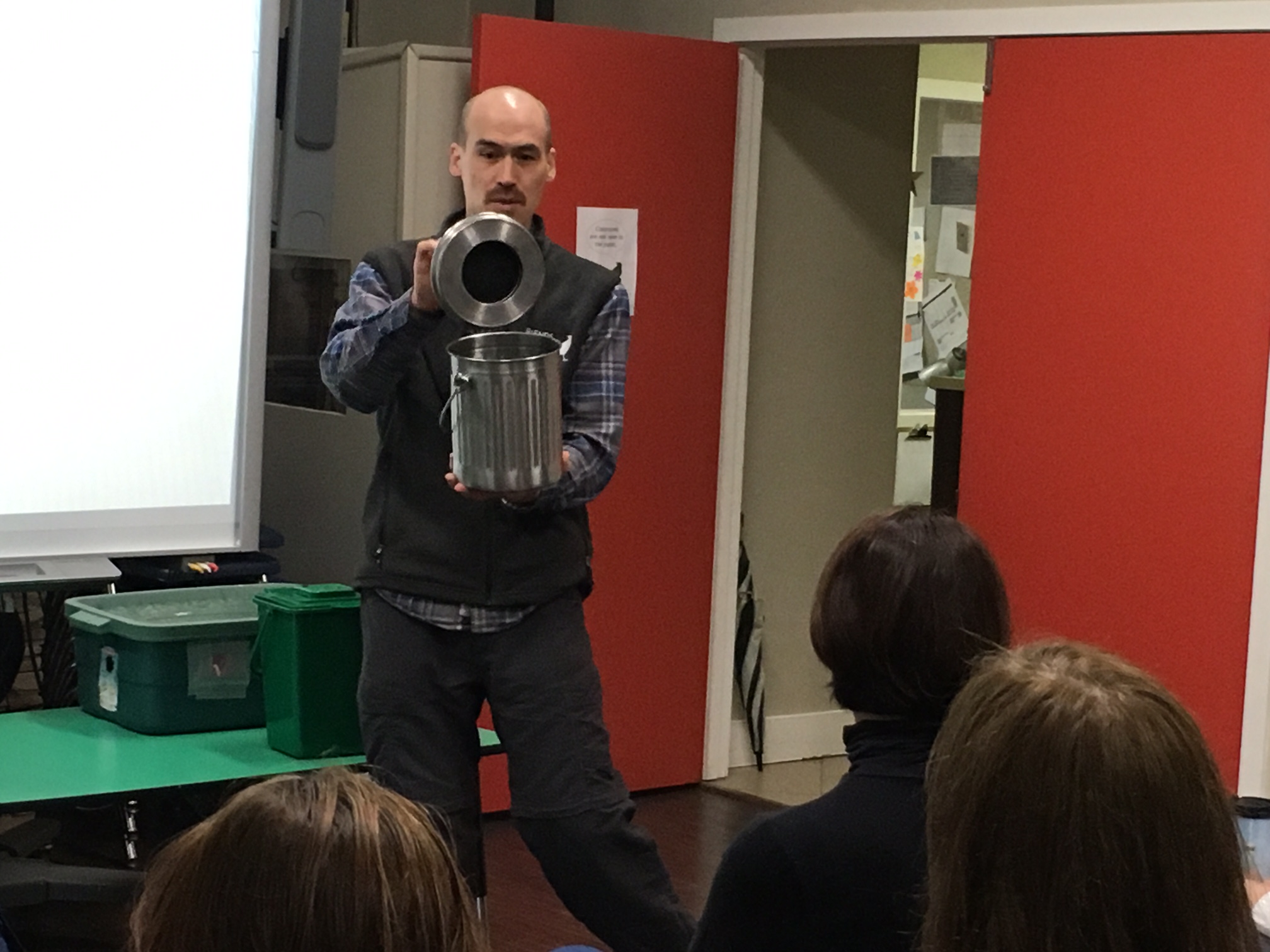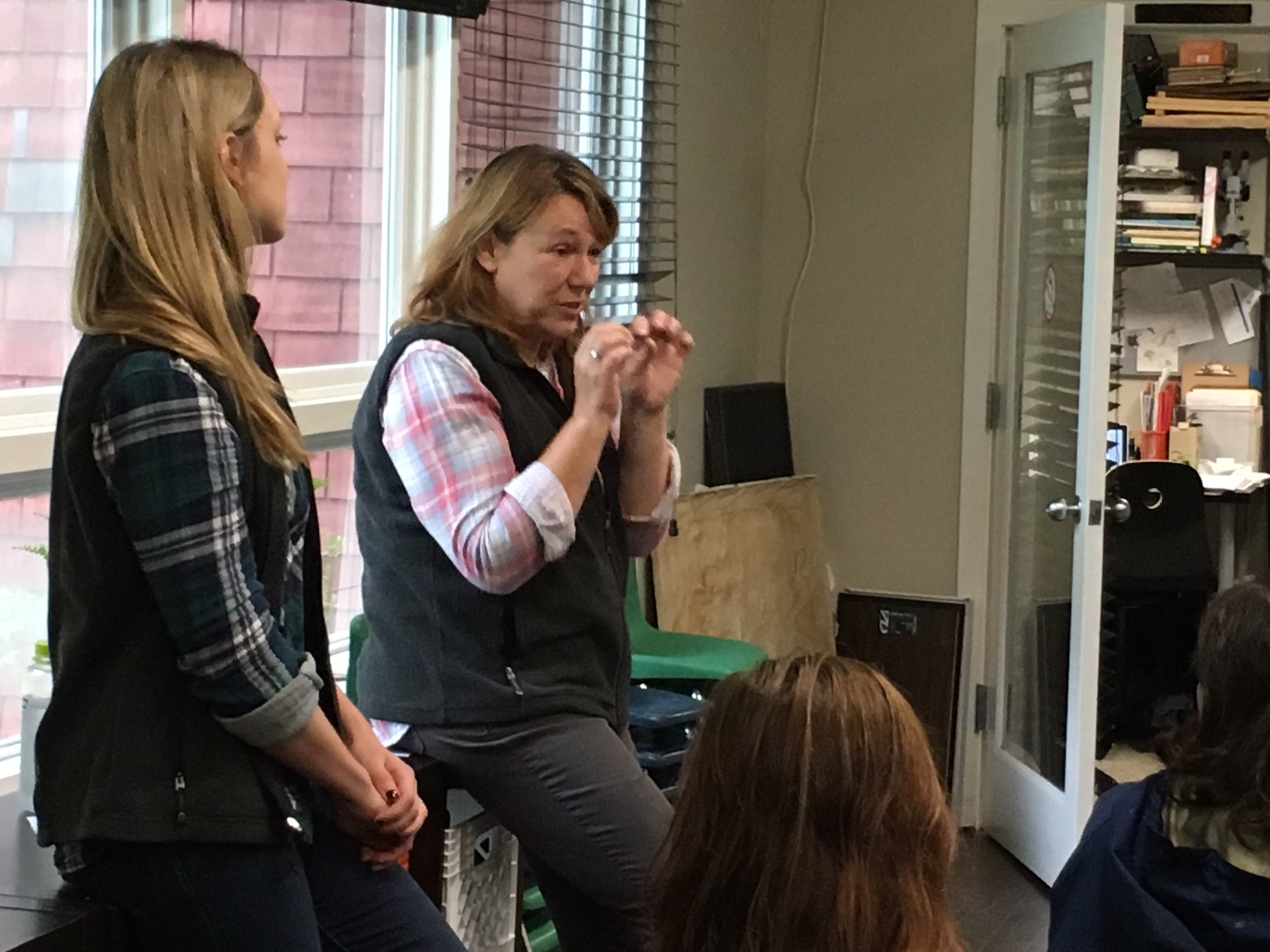Grand Prize Winner Liv McNamara's winning design.
The Rye Healthy Yard sign design contest is over and the winners have been announced. The Grand Prize winner is Liv McNamara. Congratulations Liv!
Visit the contest photo gallery to view all entries and watch Rye TV's coverage of the event.
Details about the age category winners can be found below, including more photos from the contest.
Visit the Rye Healthy Yard page to learn how you can make your yard safe and healthy. Then take the RHYP pledge so you can receive a lawn sign with the winning design!
Thank You!
Thank you to all those who helped make this initiative such a successful one:
Judges: Catherine Parker, Jennifer Sandling, Christine Siller, Tracy Stora, Danielle Tagger-Epstein and Mayor Joe Sack for announcing the winners.
Refreshments: Rosemary & Vine
Awards: Rye Arts Center, Arcade Booksellers and A.I. Friedman
And a special thank you to Rye Arts Center for graciously opening their doors to host this contest!
Contest Winners
Overall Grand Prize: Liv McNamara
Elementary School Category:
Winner: Mattia Gibbs
Honorable Mention: Julia Zanolin, Clea Rousse and Sofia Rodrigues
Middle School Category:
Winner: Geordy Varino
Runner Up: Rory Cronin
Honorable Mention: Reese Wolfe and Charlotte Lee
High School Category:
Winner: Charlotte Townley
Adult Category:
Winner: Sheri Amsel
